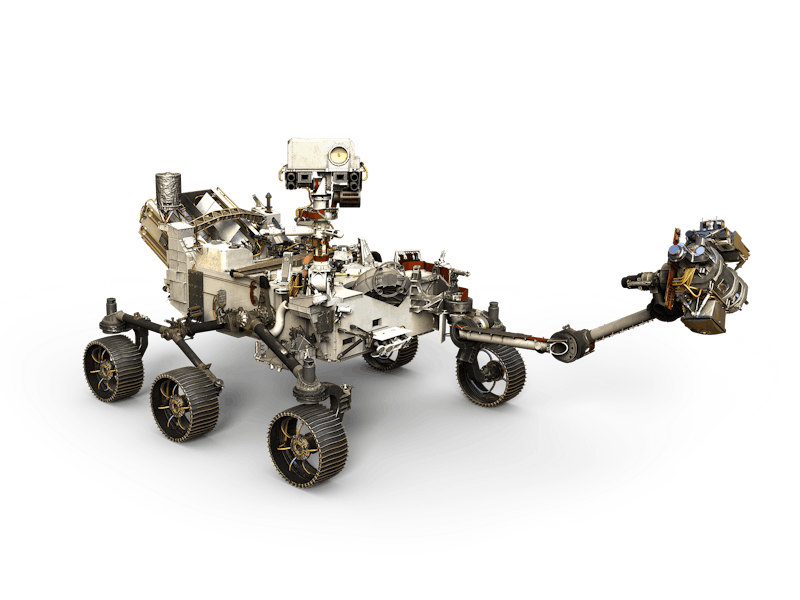NASA Plans for Its Next Wave of Martian Robots
The trusty robots on Mars are finally wearing out.

NASA has ambitions for Martian astronauts to one day tromp around the red desert, peer under rocks, dig into the ground, and climb into pits. But for now, the future of Mars exploration is strictly robotic, and Congress wants a plan because Mars’ robotic explorers are aging. At the July 10 Mars Exploration Program Analysis Group (MEPAG) meeting, scientists confirmed that they will deliver one by August.
“It is in August when the committee meets that they’ll hear a coherent Mars architecture for what we hope to do for sample return and potentially other missions associated with that,” Michael Meyer, lead scientist for the Mars Exploration Program at NASA Headquarters, said at the MEPAG meeting. “We’re on the hook to present something because this is actually something that Congress has asked for in their appropriations.”
At the meeting, Meyer did not reveal the details of these plans, which NASA calls its “architecture,” revealing only the team’s general intent to collect samples of Martian rocks and soil. Those details will be presented at the August National Academies committee review, and this planning is absolutely essential. Beyond the Mars 2020 rover, which is currently being pieced together at NASA’s Jet Propulsion Laboratory, there is no coherent plan. This is a reality that NASA scientists find troublesome.
“Our main concern is that the Mars Exploration Program is getting old and nearing exhaustion,” said Jeff Johnson, a planetary geologist at the John Hopkins Applied Physics Laboratory Johnson, at the MEPAG meeting.
The newest robot on Mars, the Curiosity rover, landed in 2012, and although it’s in pretty good shape, the machine’s metallic wheels are already being pierced and punctured by the rough Martian terrain. The other active rover, Opportunity, landed in 2004 and was designed to last for just three months. The earlier rovers are now defunct, gathering red dust in the windswept Martian desert.
Atop the Mars 2020 robotic rover will be the SUPERCAM, which will shoot rocks with a laser to inspect for chemical ingredients that could have once supported life. If the rover finds anything promising, it will motor over and deploy biosignature-sniffing instruments, which will look for well-ordered, complex molecules -- which NASA scientists consider 'unambiguous' signs of life.
Orbiting above these off-roading robots is the Mars Reconnaissance Orbiter, which arrived in Mars’ orbit in 2006 and is responsible for the last decade’s detailed images of Mars dried-up gullies and lakebeds. Hovering between 160 and 200 miles above the surface, its powerful camera can capture objects as small as a kitchen table. But capturing captivating images aren’t the orbiter’s only purpose. It serves as NASA’s “interplanetary internet,” sending and receiving crucial robotic data to and from Earth.
The success of the orbiter and rovers, however, create the illusion that Martian exploration missions are in top shape, when in reality, they’re wearing out.
“The problem here is that things look good because we have so many missions there from past investments,” said Casey Dreier, director of space policy for The Planetary Society, at the meeting. “It’s much harder to point out that we’re not making the investments now to set up the program we want for the next decade.”
Future robotic investments will include a new orbiter, with a desired 2022 arrival date. By then, the Mars Reconnaissance Orbiter will be 16 years old. NASA also hopes to pursue its ambition of bringing Martian rocks to Earth. The 2020 rover is expected to begin this effort by using a robotic arm and hand to collect rocks of interest and then store them for future collection.
But carrying rocks millions of miles through the solar system doesn’t come cheap, so Congress will need to guarantee funds for NASA to move forward on its specimen-collection planning in time for next year’s budget. As of now, there is a paltry $2.9 million requested for future Mars robotic mission planning in the 2018 budget.
That won’t get Martian rocks too far off the ground.